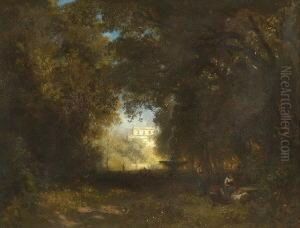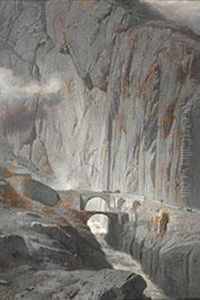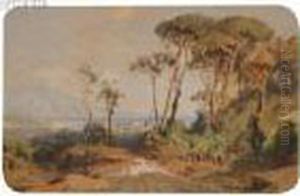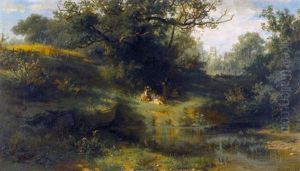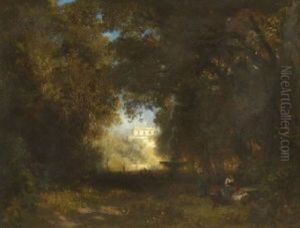Gustav Paul Closs Paintings
Gustav Paul Closs was a German painter and illustrator, born in 1864 in Stuttgart, Germany. His contributions to art were primarily in the realms of landscape and architectural painting, reflecting a keen interest in capturing the essence of his homeland's natural beauty and historical buildings. Closs was part of the broader movement of German Romanticism, albeit aligning more closely with its later phases, which merged a keen sense of realism with an underlying romantic sensibility towards nature and heritage.
Closs received his artistic education at the Stuttgart Art Academy, where he was influenced by the prevailing styles of the time, including elements of Realism and the nascent stirrings of Impressionism. However, Closs carved out a distinctive niche for himself through his detailed and vivid portrayals of German landscapes and cityscapes, often infused with a tranquil, though sometimes melancholic, atmosphere. His works are characterized by a meticulous attention to detail, a harmonious color palette, and a masterful handling of light and shadow, which together create a sense of depth and realism.
Throughout his career, Gustav Paul Closs remained closely tied to his roots in Stuttgart, drawing inspiration from its surroundings and the broader Swabian region. Despite this local focus, his work gained recognition beyond his immediate locale, contributing to exhibitions across Germany and in other parts of Europe. Closs was also a prolific illustrator, contributing to books and periodicals, where his illustrations helped to visualize the literary and historical themes of the late 19th and early 20th centuries.
Closs's artistic output reflects an era in German art that was transitioning from the strictures of academic painting towards more modern expressions, although he himself remained somewhat conservative in his stylistic choices. His landscapes and urban scenes are not only valuable for their artistic merit but also offer a historical window into the Germany of his time, capturing scenes and settings that have since transformed or vanished.
Gustav Paul Closs passed away in 1938, leaving behind a legacy that, while perhaps not as widely recognized as some of his contemporaries, remains appreciated for its contribution to the landscape and architectural painting traditions in Germany. His works continue to be studied and admired for their beauty, technique, and historical value, encapsulating a moment in time in the country's rich cultural tapestry.
